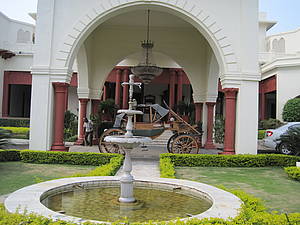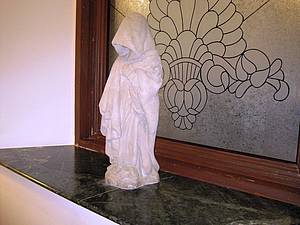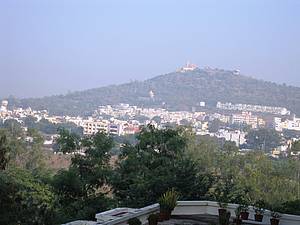Bhopal
Bhopal – conference and sightseeing 2010
Bhopal is the capital city of Madhya Pradesh. After long negotiations, the Dirk company managed to conclude five-year contract with a thermal power station in Sarni for the supply of fly ash for our plant which we decided to build in Mandideep - 6 km from Bhopal .
On the occasion of the opening of the factory we organized a seminar to promote sales of Pozzocrete as technically and economically competitive replacement of cement in concrete production.
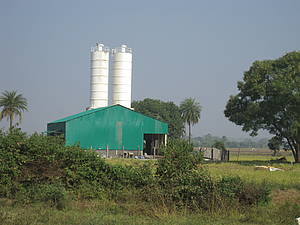
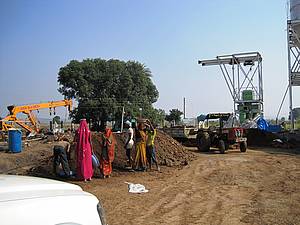
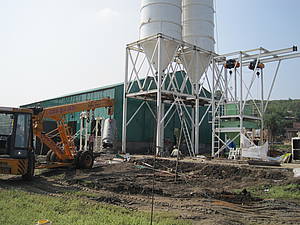
Dirk Factory in Mandideep in construction
Being involved in business outside the main Indian centers brought along unexpected difficulties and surprises. The story of how Muslims came to defend the remains of their ancestors buried 120 years ago on our property will be described in the section Life in India. But the habits of the region are complicated and can bring some incredible experience. We had a meeting with an entrepreneur who started to build about 20 000 new luxury homes and was also dominating most of the local press – he was an influential and educated man. In his luxury villa / home office, everything looked tip top - as you might expect, all extremely luxurious, but unlike some other Indian rich, with a good taste too. There were around 150 people employed in the villa. Upon arrival for the meeting George could see all the employees on their knees with white tape over their eyes. When he requested an explanation he was told that every day before starting work, all employees have to come 15 minutes earlier, they get the white tape on the eyes (to be forced to concentrate) and they pray. Only then they can start to work. At a time when Eid is celebrated, which was the time of our stay, they have to pray together several times a day like that. Several times a day I also heard the muezzins calling for prayer several times a day - and then life stopped. We had a various insights into the local life like that.
The conference was a success. When the official duties ended , I took a taxi and went on a sightseeing tour of Bhopal. I saw a number of outstanding historical monuments , especially from the time of Mughals dynasty and from the time of ruling by four women queens called beghum.
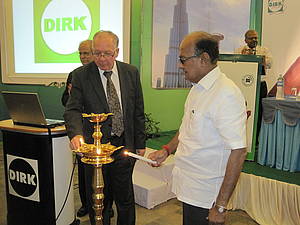
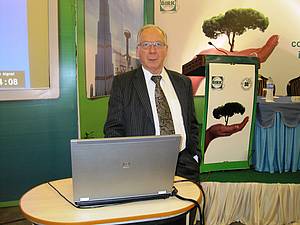
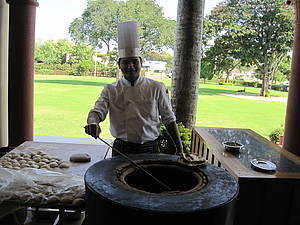
Conference - lighting the lamp, Georg lecture, preparing nanbread for guests
History:
Bhopal is said to have been founded by the King Bhoj the Second (1000–1055) from dynasty Parmar who had his capital at Dhar. The city was originally known as Bhojpal named after “Bhoj” and the dam (“Pal”) that is said to have been constructed by him to form the lakes surrounding the city. (today the Lower Lake and the Upper Lake). The fortunes of Bhopal rose and fell with that of its reigning dynasty. As the Parmaras declined in power, the city was ransacked several times and finally faded away into obscurity.
An Afghan soldier of the Orakzai tribe called Dost Mohammad Khan laid out the present city at the same site following the death of the Moghul Emperor Aurangzeb in 1707. The information about the rule of Moghuls can be obtained on my webpage in the section about travels to “Jaipur – Agra”. Dost Mohammad Khan brought with himself the Islamic influence on the culture and architecture of Bhopal, the ruins of which can be seen at Islam Nagar. Bhopal was the second largest Muslim state in pre-independence India.
Between 1819 and 1926, it was ruled by four women – Begums – which was a unique situation in the royalty of those days. Qudsia Begum was the first woman ruler, who was succeeded by her only daughter Sikandar Begum, who in turn was succeeded by her only daughter, Shahjehan Begum. Sultan Jahan Begum was the last women ruler, who after 25 years of rule, abdicated in favour of her son, Hamidullah Khan. The succession of ‘Begums’ gave the city such innovations as waterworks, railways and a postal system. Several monuments still stand in the city as reminders of this glorious period in its history. A municipality was constituted in 1907.
Bhopal was one of the last princely states to sign the Instrument of Accession of 1947. India achieved its Independence in August 1947, but the ruler of Bhopal acceded to India only on 1 May 1949. After Partition, Sindhi refugees from Pakistan were accommodated in West Bhopal Cities, especially in a western suburb of Bhopal. According to the States Reorganization Act of 1956, Bhopal state was integrated into the state of Madhya Pradesh with Bhopal declared as its capital. Thereafter the population grew rapidly.
I have visited the following monuments:
Gohar Mahal (mahal = palace), built by Qudsia Beegum, which is a fusion of Hindu and Moghul architecture, on banks of the Upper Lake – they were preparing an exhibition and sale of tribal arts there
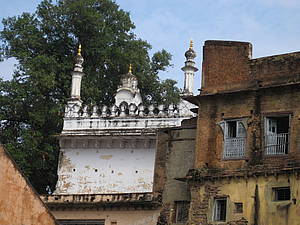
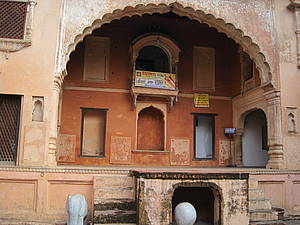

Gohar Mahal
Shaukat Mahal – This magnificent palace had besides the Indo-Islamic mixture also some elements of European architecture. Babe Sikandari Darwajala – an attractive gate used by royal females buillt 1840.
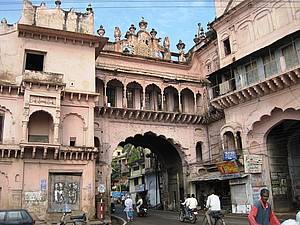
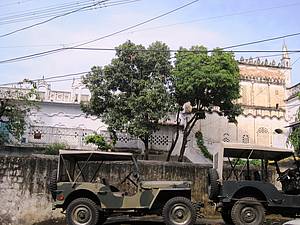
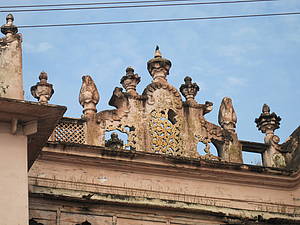
Shaukat Mahal
Sadar Manzil – used by Begums for public audience, now Head Office of Municipal Corporation, in totally deteriorating state
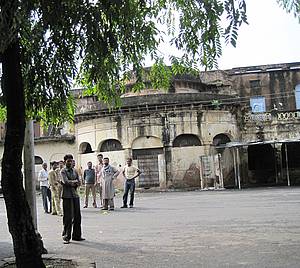
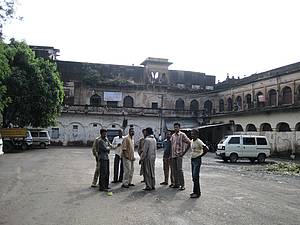
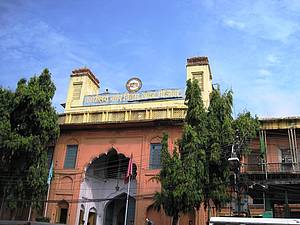
Begums´former public audience hall
Taj-Ul-Masajid – one of the largest mosques in Asia (The Crown of Mosques, it is also used as madrasa). Its construction was initiated by Nawab Shah Jahan Begum and later on by her daughter at the second half of 19th century. However, because of the lack of funds the mosque was never completed and its construction was resumed only 1971 and completed 1985. The Emir of Kuwait contributed to the decoration of the main gate where the ancient motifs from around 1250 Syrian mosques are used to comemorate his departed wife.
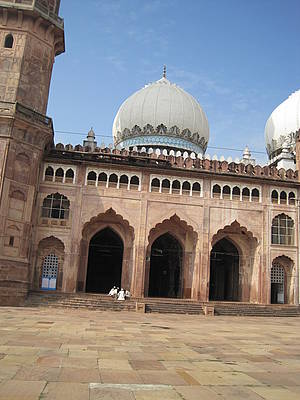
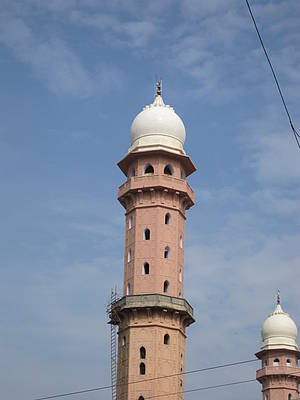
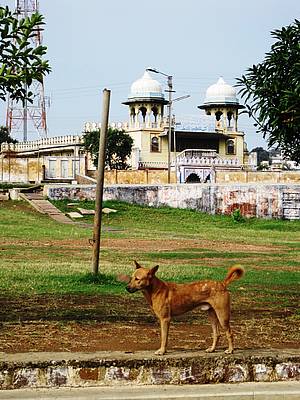
Taj- Ul - Masajid, The Crown of Mosques
Laksmi Narayana Temple (Birla Temple) - The first temple by Birla family was built in Delhi in 1939, it was inaugurated by Mahathma Gandhí under the condition that it would be accessible to people of all religious denominations. Since then Birla has built around 16 temples in various places all over India. The construction is continuously going on at some location, because the family believes that if they stop the construction of temples it will bring bad fate. This is the reason why some of the temples are not 100% finished and construction is on-going, although at a slow pace. Birla Temple in Bhopal is built from white marble similar to all the others.
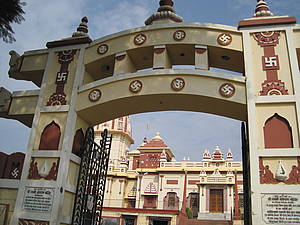
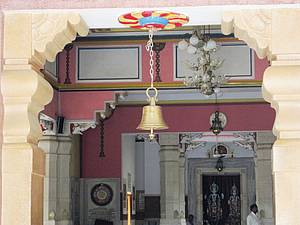
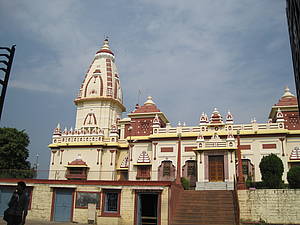
One of the Birla Family temples - Bhopal
Taj Mahal of Bhopal. Built between 1871 – 1884, it was originally named Raj Mahal (Royal Palace) but the British Resident at Bhopal was so highly impressed with the architecture that he suggested that it should be named Taj Mahal in reference to the fact that it was built by Sultan Shah Jahan (Begum of Bhopal) - she had the same name as the builder of Taj Mahal of Agra, moghul Shah Jahan. Unfortunately the palace suffered damage during the partition time of India (used as accommodation for Sindhis refugees). Recently it has been given to the tourism department to be rebuilt as heritage hotel. However, what I could see was in a very deteriorated state.
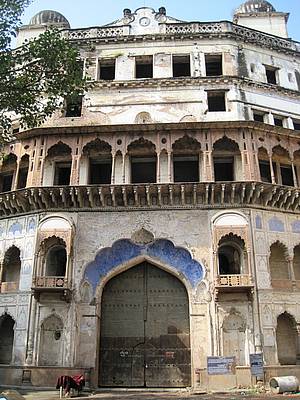
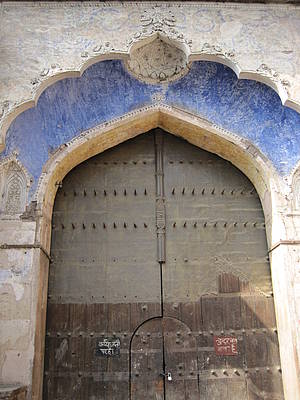
Taj Mahal Bhopal
Purana Quila (part of 300 year old fort of Queen Kamalapati, situated in Kamla park which separates the Upper Lake from Lower Lake.
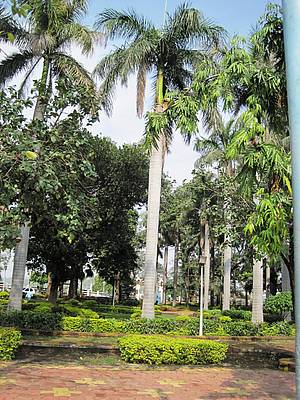
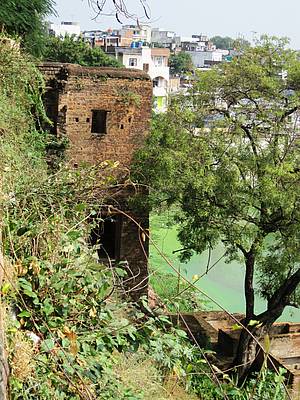
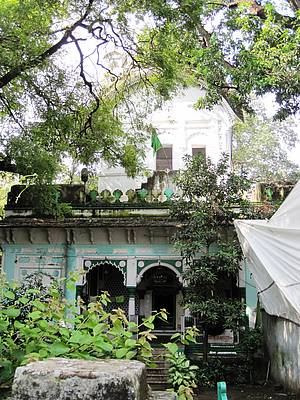
Purana Quila
Jain Temple. There are more Jain temples in Bhopal, this one, standing on the hill, resembles by its architecture jain temple in Nashik. There is a prohibition to take pictures even from outside, so I could take some only of surroundings.
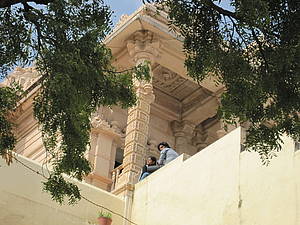
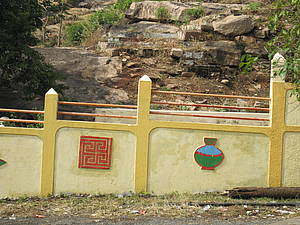
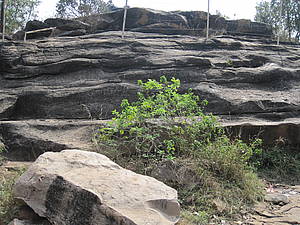
Jain Temple and surroundings
I have also seen Makbara of Nawab Faiz Mohammad Khan – tomb of the third ruler of Bhopal (1742 – 1777) and from outside Bhara Bhavan – cultural centre which containes an art gallery, amphitheatre, 2 theatres and tribal museum – unfortunately it was closed in the morning.
Outside Bhopal, at Sanchi, in the distance of around 40 km, there is the oldest stone structure in India, a buddhist Great Stupa. It was commissioned by the Emperor Ashoka the Great in the 3rd centure BC. Its nucleus was a simple hemispherical brick structure built over the relics of the Buddha. It was crowned by the chatra, a parasol-like structure symbolizing high rank, which was intended to honour and shelter the relics. In the 1st century BC, four profusely carved ornamental gateways (toranas) and a balustrade encircling the whole structure were added. Toranas surround the Stupa and they represent love, peace, trust, and courage. This world heritage site is well maintained.
In difference to the Great Stupa, the majority of the monuments of Bhopal is unfortunately in a desolate state. The only other well maintained ones is the Main Mosque and the temple to goddess Lakshmi which is taken care of by a rich company Birla (who takes care of a very similar temple also in Delhi). On the other hand, Bhopal seems to be much cleaner than Mumbai (meaning no waste and garbage openly lying around). The rains here are stronger than in the state of Maharashtra, so that there is no lack of water and everything is beatufully green. We had a couple of strong torrents at the night.
We were accommodated in a hotel on the hill Noor-Us-Sabah, which means The Light of the Dawn. It was built in the 1920's by H.H.Hamid Ullah Khan, for his eldest daughter Begum Abida Sultan. Moist winds raised from the picturesque upper lake which was below our balcony and on the other side we could directly enter into the lush garden. There was a cool air in the evening and full moon - all the scenery was highly romantic reflecting the regal times and grandeur of a bygone era.
